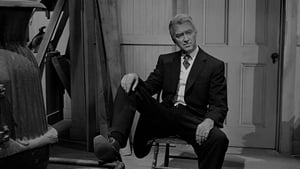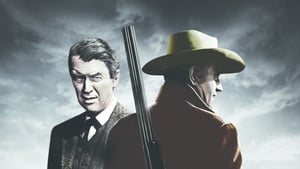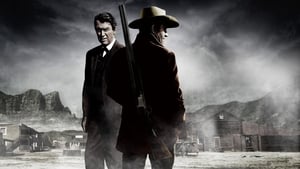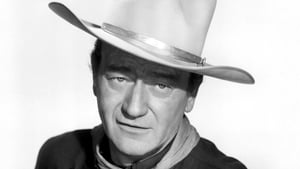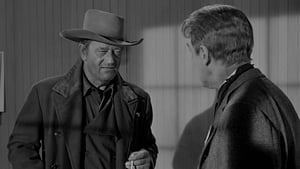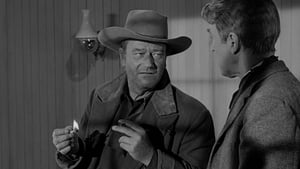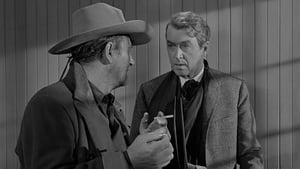Contact: [email protected]
Video Sources 0 Views
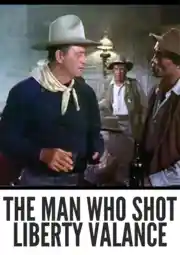
The Man Who Shot Liberty Valance Colorized 1962: Best Timeless Classic in Vibrant Color
Synopsis
[ez-toc]




Introduction
In the vast and ever-expanding annals of old movies, few hold the timeless allure and narrative potency as John Ford’s “The Man Who Shot Liberty Valance Colorized.” This 1962 masterpiece not only encapsulates the quintessence of the western film genre but also serves as a cinematic time capsule, transporting audiences to an era where the American West was both a canvas and crucible for tales of heroism, justice, and moral ambiguity. Today, we embark on a journey to explore the significance of this classic and delve into the intriguing realm of colorization, a process that has breathed new life into this iconic piece of American cinema.
Read Media File Transfer Agreement: Terms and Conditions
Read FAQ
The Man Who Shot Liberty Valance Colorized: A Journey into the American West
At the helm of this cinematic marvel is the maestro himself, John Ford, a director whose name is synonymous with the western film genre. “The Man Who Shot Liberty Valance Colorized” unfolds in the town of Shinbone, a place marred by lawlessness and the ominous presence of the eponymous antagonist, Liberty Valance, played with menacing brilliance by Lee Marvin. The stellar cast includes the indomitable John Wayne as Tom Doniphon, the enigmatic cowboy, James Stewart as Senator Ransom Stoddard, and Vera Miles as the enchanting Hallie Stoddard.
Shinbone, depicted through Ford’s lens, becomes more than just a backdrop; it transforms into a character itself, embodying the essence of the American West. The film revolves around a territorial convention, Senator Stoddard’s recounting of his encounter with Liberty Valance, and the intricate interplay of love, sacrifice, and the complexities of morality.
Unveiling the Plot and Characters of the Film
The narrative unfolds as Senator Stoddard recounts his arrival in Shinbone, seeking to bring justice and order to a town fraught with chaos. Enter Tom Doniphon, a rugged and enigmatic cowboy whose paths intersect with Stoddard’s, setting the stage for a compelling exploration of morality and the cost of progress in the American West.
The storyline weaves through flashbacks, gradually unraveling the layers of the characters and the moral quandaries they face. John Wayne’s portrayal of Tom Doniphon is stoic and powerful, embodying the archetype of the western hero. James Stewart brings depth to his character, navigating the complexities of a man torn between idealism and the harsh realities of the frontier. Lee Marvin, in his role as Liberty Valance, delivers a performance that lingers long after the credits roll, creating a formidable presence that epitomizes the lawlessness of the West.
The Artistry of John Ford: Direction and Cast Selection
John Ford’s directorial style is a symphony of sweeping landscapes, meticulous attention to detail, and a keen understanding of the human condition. His lens captures not just the external struggles of the characters but delves into their internal conflicts, making the audience empathize with their journeys.
The supporting cast further enhances the tapestry of the film. Andy Devine’s portrayal of Marshal Link Appleyard provides a touch of humor amid the tension, while Edmond O’Brien as the newspaper editor Dutton Peabody adds depth to the ensemble. Ford’s ability to select actors who seamlessly blend into the fabric of the narrative is evident, creating a cinematic experience that transcends the screen.
Examining the Significance of the Western Genre in American Cinema
As we navigate the narrative, the film becomes a commentary on the Western genre’s enduring significance in American cinema. Jimmy Stewart’s portrayal of Senator Stoddard serves as a conduit for exploring the theme of progress in the American West. The character of Horace Greeley, symbolizing the relentless march of progress, adds a layer of depth to the film’s exploration of societal evolution and the clash between the old and the new.
The Western genre, with its archetypal characters and timeless themes, has continued to captivate audiences for decades. “The Man Who Shot Liberty Valance Colorized” stands as a testament to the genre’s ability to transcend mere entertainment, offering a mirror to the complexities of the human experience within the backdrop of a changing frontier.
Reviving an Old Classic: The Colorization of “The Man Who Shot Liberty Valance Colorized”
In the realm of film preservation and restoration, the question of colorization often sparks heated debates among cinephiles and purists. Enter “The Man Who Shot Liberty Valance Colorized 1962,” a decision that intrigued and divided audiences. As a film reviewer, the prospect of witnessing an old classic in vibrant color was both exciting and daunting.
Colorization, as a process, involves digitally adding color to black-and-white films, aiming to enhance the visual appeal and make them more relatable to modern audiences. For purists, tampering with the original aesthetic of a classic raises concerns about altering the director’s intended vision. However, proponents argue that colorization can breathe new life into old films, making them more accessible to contemporary viewers.
Critical Acclaim and Controversy: A Review of “The Man Who Shot Liberty Valance Colorized”
The colorized version of the film elicited a spectrum of reactions from both critics and audiences. Detractors argued that the authenticity of the original black-and-white version was compromised, diminishing the intended atmosphere and mood. On the other hand, proponents contended that the colorization added a layer of visual richness, allowing audiences to engage with the film in a new light.
As a film reviewer, standing at the intersection of tradition and modernity, the colorization presented a conundrum. While the hues added vibrancy to the landscapes and costumes, inevitably altering the visual dynamics, the essence of John Ford’s masterful storytelling and the brilliance of the cast remained untouched. John Wayne’s stoic portrayal, James Stewart’s nuanced performance, Lee Marvin’s menacing presence, and Vera Miles’ captivating role all retained their magic, transcending the color palette.
The debate surrounding the colorization of “The Man Who Shot Liberty Valance Colorized” prompts reflection on the evolving nature of cinema and its preservation. While some may argue that classics should remain untouched, others posit that colorization serves as a bridge between generations, ensuring that these cinematic gems continue to resonate with audiences of varying sensibilities.
Preserving a Timeless Classic: The Legacy of “The Man Who Shot Liberty Valance Colorized” 1962
As the dust settles on the colorization debate, “The Man Who Shot Liberty Valance Colorized” stands as a testament to the enduring legacy of cinematic masterpieces. Whether experienced in its original black-and-white form or the colorized version, the film continues to captivate audiences with its compelling storytelling and iconic characters. The enduring legacy of this masterpiece lies not just in its narrative brilliance but in its ability to adapt to the evolving landscape of cinema.
In conclusion, “The Man Who Shot Liberty Valance Colorized 1962” invites audiences to embark on a dual journey — one through the rugged terrains of the American West and the other through the evolution of cinematic technology. The film, whether witnessed in its original monochromatic glory or the vivid hues of colorization, remains a testament to the timelessness of storytelling and the power of cinema to transcend temporal boundaries. As we traverse the annals of old movies, this classic serves as a guiding star, reminding us that even in the face of controversy and change, the essence of a cinematic masterpiece endures, undiminished by the passage of time.
